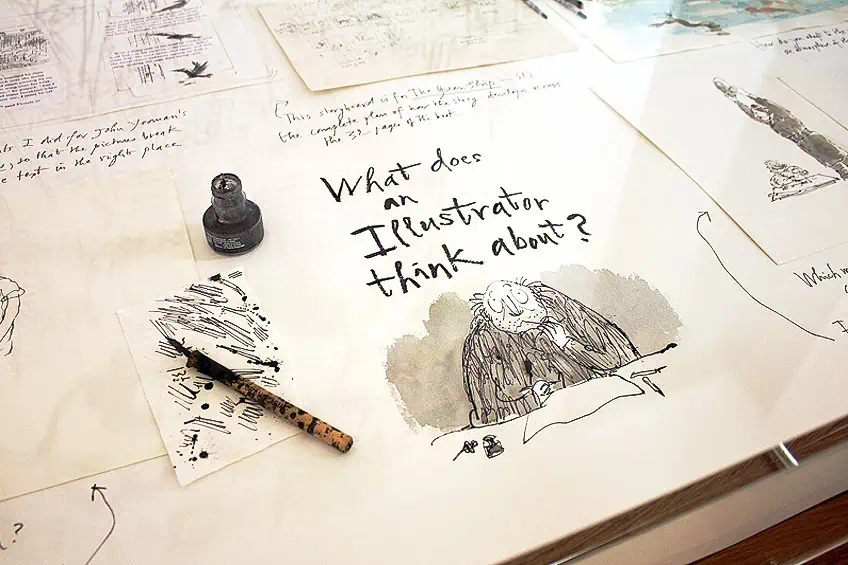Famous Illustrators – Profiles of 10 Renowned Illustrators
What is an illustration, and who are the world’s best illustrators? The beauty of illustration, as an art form that emerged from its associations with literature, media, entertainment, and representation, is one that everyone should take the time to learn more about. Illustrations provide artists with an avenue to explore their creative potential in a variety of graphic media, while broadening the room for collaboration among artists, writers, and the general public. In this article, we will introduce you to the 10 most popular illustrators of all time, which includes artists from the contemporary era and the 20th century. Read on to discover some of the world’s most famous illustrators!
Contents
- 1 What Is Illustration in Art?
- 2 Discover 10 Famous Illustrators in History
- 2.1 Beatrix Potter (1866 – 1943)
- 2.2 Wanda Gág (1893 – 1946)
- 2.3 Norman Rockwell (1894 – 1978)
- 2.4 Dr. Seuss (1904 – 1991)
- 2.5 Tove Jansson (1914 – 2001)
- 2.6 Quentin Blake (1932 – Present)
- 2.7 Jerry Pinkney (1939 – 2021)
- 2.8 Richard Corben (1940 – 2020)
- 2.9 Hayao Miyazaki (1941 – Present)
- 2.10 Malika Favre (1982 – Present)
- 3 Frequently Asked Questions
What Is Illustration in Art?
Before we dive into our list of the 10 most famous illustrators you need to know about, we must first tackle the basics. What is an illustration, and what is the significance of this art form today? Illustration refers to the practice of creating images using various media, from drawing to digital art, to provide visual representations of concepts, ideas, people, products, and many other ideas and things. As such, illustrations are images that serve multiple functions and can be decorative, artistic, conceptual, or produced solely for integration into printed or digital media.
You may be familiar with digital forms of literature from the newsletters you receive in your emails and from subscriptions that you enjoy.
Illustrations help to communicate visual information more concisely or make an idea clear to a viewer. As such, illustrations can incorporate symbols or literal depictions of objects that convey the intended message. Today, one has access to a variety of illustration software and online educational tutorials and material to help you bridge your way into learning how to create illustrations. Whether it starts as a sketch on paper or a digital brush on your tablet, there is much to discover about the world of illustration art.
The Art of Storytelling in Illustration
Apart from the commercial interests of illustration artwork and collaborative benefits, one can also recognize the beauty of narration and storytelling in illustration. Storytelling refers to the age-old art of weaving certain narratives made up of shared emotions and experiences that help transmit knowledge. Storytelling helps illustrators transcend their practice and improve their work by transcending cultural and temporal boundaries and evolving commonly understood oral traditions into digital and visual media. At the heart of storytelling is a medium that works with illustration to help people make sense of the world and communicate key personal truths that may resonate with millions.

So, how do artists use illustrations to tell stories? Keep in mind that illustrations are potent mediums for articulating our narratives and employ various techniques to evoke emotions. From immersive realities to characters with complex and relatable backstories, illustrating life and fictional realities can be used to achieve an emotional effect. Illustrators rely on elements and their relationships to each other, from form and color to line and contrast to bring stories and texts to life. Illustration can take shape in any visual form, from intricate pencil sketches to bold digital compositions that showcase the atmosphere of the narrative. Take for example comic book illustration and the creation of characters, which become more than a simple description of imagined identities. These identities are brought to life by the illustrators who contribute to the storytelling of the image.
The Symbiotic Relationship of Storytelling and Illustration in Art History
When looking at the history of illustration and storytelling in art history, one can draw connections to its function as a medium that enables the transmission of stories, histories, and cultures across time. As the contemporary world evolves and uses technology to aid the synergy between storytelling and illustration, we can continue to improve the way we approach illustration and share stories. If one takes a look at the past versions of illustration, one might be drawn to the ancient cave paintings, which originally served illustrative functions to document the daily chronicles of early humans and cultures. Fast forward to Medieval literature, illuminated manuscripts contained illustrations that accompanied religious texts, thus making Christianity accessible to readers for those who could not read.
The invention of the printing press also moved illustrations and the need for such up the ladder to disseminate stories and events to wider audiences. Illustrations in the 19th century also accompanied the works of literature giants, including collaborations such as George Cruikshank with Charles Dickens.
Comic illustrations thus emerged as a 20th-century development and saw the rise of children’s literature and illustrations through the eyes of figures like Quentin Blake, Maurice Sendak, and Dr. Seuss, some of whom we will introduce below. As we move into the contemporary era with digital developments across animation and interactive media, one finds the importance of illustration ever more so important, from webcomics to your favorite anime. This also invites questions about the future of illustration with the rise of generative art and the role of the illustrator in either working with new technologies or sticking to early contemporary mediums to produce their work. While the discourse may be extensive, we invite you to explore the works of illustrators of the past and present to help you realize the significance of illustration.
Discover 10 Famous Illustrators in History
Other terms that may come to mind when thinking about illustration include the terms “visualization” and “pictures”. Many illustrators often find themselves in commercial spaces to provide their artistic expertise to companies and small businesses to help promote products, produce content, and condense complex topics into visual images. This job is no easy task since it also requires some graphic design. Below, we have compiled a list of the 10 most famous illustrators you need to know today.
Beatrix Potter (1866 – 1943)
| Artist Name | Helen Beatrix Potter |
| Date of Birth | 28 July 1866 |
| Date of Death | 22 December 1943 |
| Nationality | English |
| Associated Movements, Themes, and Styles | Modern art, nature, animal art, conservation, and natural science |
| Mediums | Illustration, drawing, and writing |
| Notable Works |
|
Globally renowned English illustrator Helen Beatrix Potter was one of the most famous illustrators of all time. Her multifaceted career as a natural scientist, writer, and conservationist contributed to her stunning and detailed illustrations, best captured in works like The Tale of Peter Rabbit (1902). This was her first commercially published book that featured many charming illustrations of animals alongside her enchanting tales. Her works have collectively sold more than 250 million copies of her publication, which makes her among the most popular illustrators.
While many people know of Potter and her illustrations, most are unaware of her history.
Potter was born into an upper-middle-class household, which was marked by her experiences with isolation and tutelage from governesses. This period allowed her to explore the natural world and was aided by her travels to Scotland and the Lake District, where she painted and drew her observations on the flora and fauna of the landscape. A passionate entrepreneur, Potter is credited with spearheading character merchandising since her fictional character Peter Rabbit became the first patented fictional character, sold as a stuffed toy in 1903.
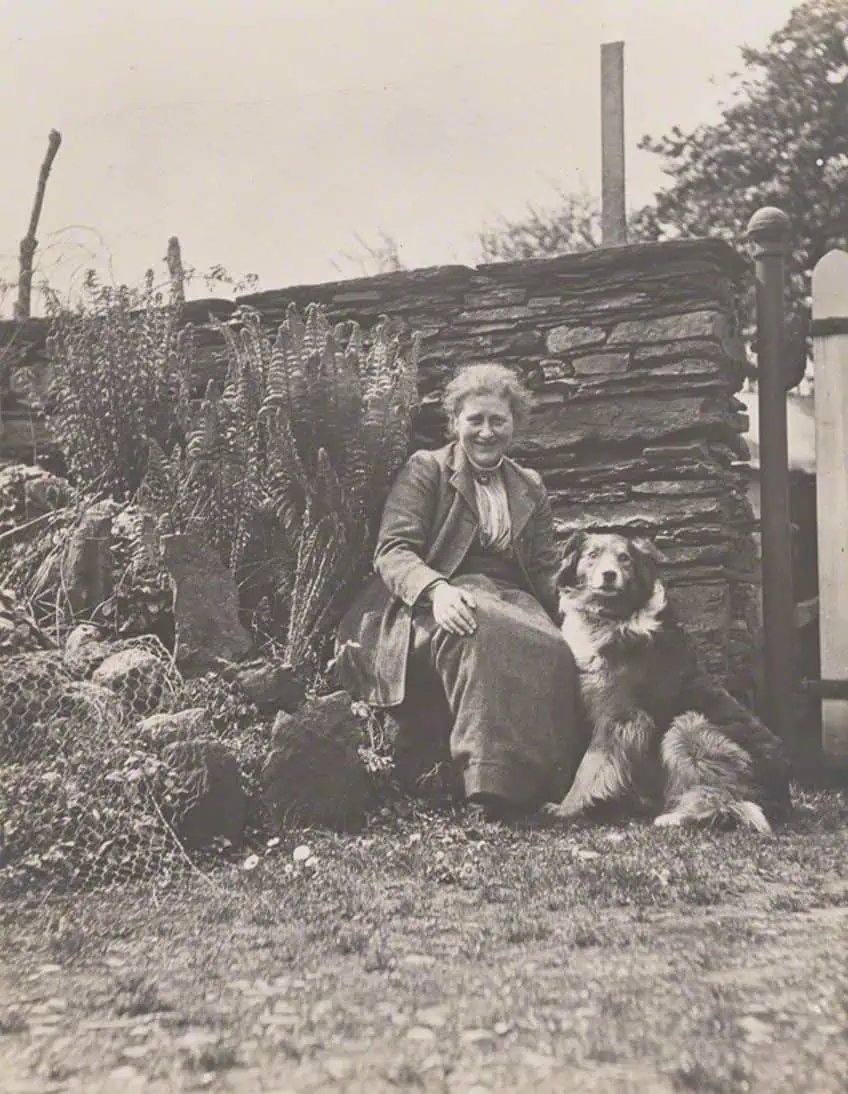
Her mycological studies and watercolor illustrations of fungi also earned the artist wide respect in the field of mycology while the proceeds from her literary successes enabled her to buy Hill Top Farm in 1905 and broaden her conservation plans in the Lake District. Potter also drew inspiration from fairy tales and fantasy literature. Apart from literature, her life went on to inspire a ballet film The Tales of Beatrix Potter (1971), as well as features and mentions in other films and series.
Wanda Gág (1893 – 1946)
| Artist Name | Wanda Hazel Gág |
| Date of Birth | 11 March 1893 |
| Date of Death | 27 June 1946 |
| Nationality | American |
| Associated Movements, Themes, and Styles | Modern art, rural scenes, domestic interior scenes, landscape art, and still-life |
| Mediums | Illustration, drawing, writing, printmaking, and translation |
| Notable Works |
|
Born in 1893, Wanda Hazel Gág was among the most popular American illustrators of the early 20th century, whose career as an artist, illustrator, author, and translator left a significant legacy in children’s literature. Widely appreciated for her seminal work Millions of Cats (1928), which remains the oldest American picture book still available in print, Gág’s talents did not go unnoticed. Her career extended beyond illustration for children’s books since she was also recognized as a master printmaker, who garnered international recognition and many awards.

Furthermore, her illustration journey was marked by her enduring commitment to drawing, which was immortalized in her motto “Draw to live, live to draw”. Gág trained at the Art Students’ League and held many one-person shows in many art galleries across New York. She left behind an extensive collection of sketchbooks, ink drawings, and watercolor paintings that showcased her ability to transform ordinary subjects into vibrant works of art. From still-life to domestic interiors, Gág’s work was also politically charged since she was also involved in early feminist activities. She was the recipient of two Newbery Honors and Caldecott Honors, which solidified her status as a pioneer in American illustration.
Norman Rockwell (1894 – 1978)
| Artist Name | Norman Percevel Rockwell |
| Date of Birth | 3 February 1894 |
| Date of Death | 8 November 1978 |
| Nationality | American |
| Associated Movements, Themes, and Styles | Modern art, American culture, modern life, and Saturday Evening Post cover art |
| Mediums | Illustration and painting |
| Notable Works |
|
Born in 1894, illustrator artist Norman Percevel Rockwell was widely regarded as a luminary illustrator of the mid-20th century. Working primarily in the United States, Rockwell was best known for his evocative illustrations in print media like the Saturday Evening Post, which featured scenes of American culture and everyday life. Rockwell was born into a period of vast change, which is reflected in his illustrations.
He was the recipient of a scholarship at the Art Students League and bagged his first freelance project at the age of 17 for Condé Nast.
Rockwell went on to work with The Saturday Evening Post, where he produced around 322 covers for the magazine over five decades. What made his work so popular among the masses was his artistry for realism and meticulous detail. His illustrations vividly captured the heart of American Modern living in small-town communities and were usually embedded with snippets of humor. While his work was widely celebrated in the West, critics identified his work as perhaps questionable in terms of its social authenticity and artistic merit.
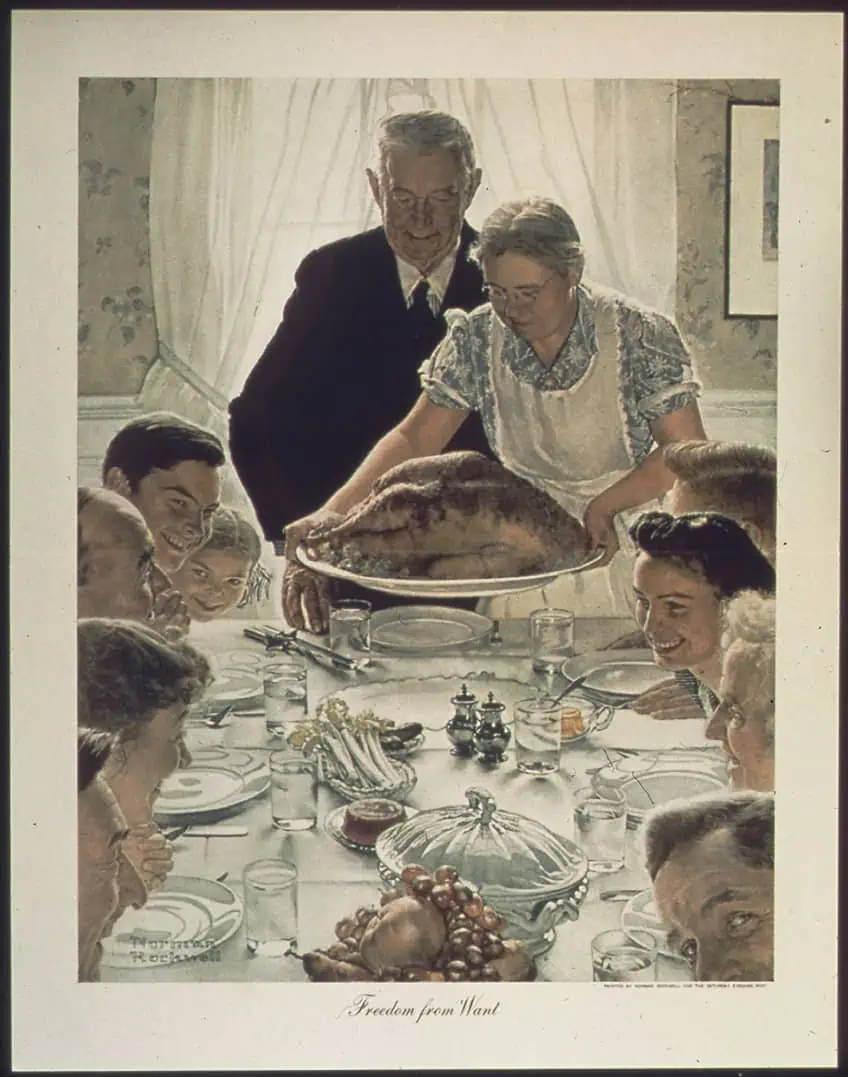
Dr. Seuss (1904 – 1991)
| Artist Name | Theodor Seuss Geisel |
| Date of Birth | 2 March 1904 |
| Date of Death | 24 September 1991 |
| Nationality | American |
| Associated Movements, Themes, and Styles | Modern art, children’s literature, cartoon illustration, Maximalism, formalism, and fiction |
| Mediums | Illustration, drawing, and filmmaking |
| Notable Works |
|
Born Theodor Seuss Geisel, Dr. Seuss was the most famous and recognized American author, illustrator, and cartoonist, who continues to be celebrated as an icon in children’s literature illustration. His imaginative and often incredibly whimsical illustrations shaped the imaginations of numerous children and adults across the world for their recognizable and humor-filled characters. Dr. Seuss’ artistic style is characterized by his use of playful colors and exaggerated forms that produce these fantasy-like characters, whose images become instantly recognizable.
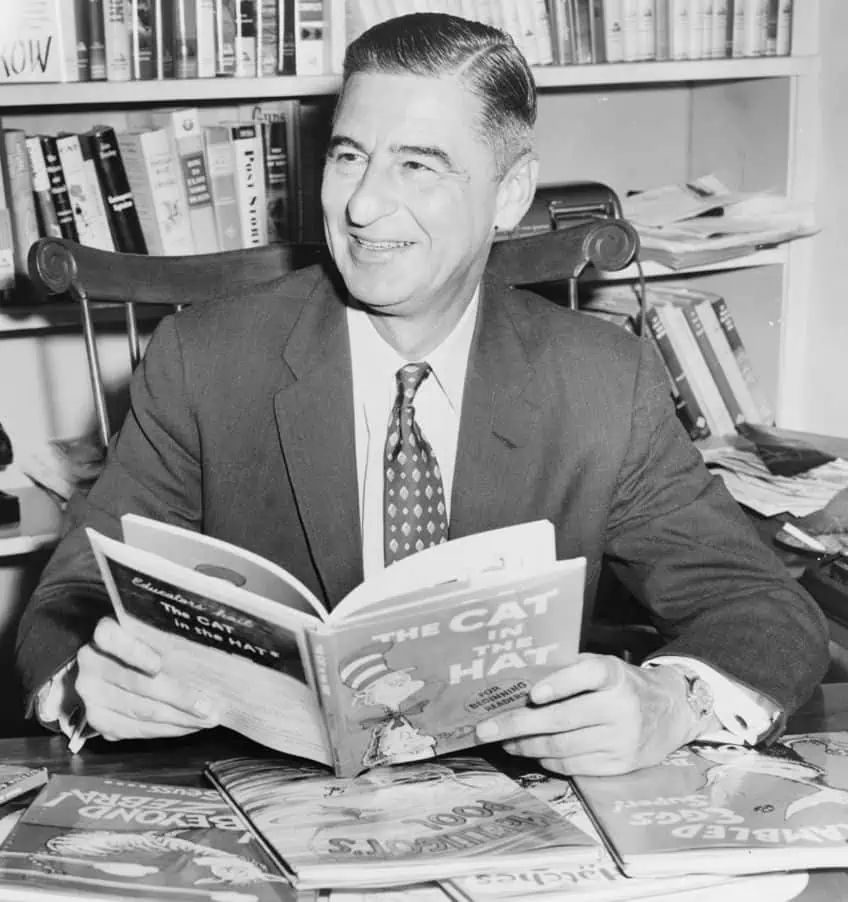
With numerous illustrations for over 60 children’s books, Dr. Seuss’ work is best known for his classical works like Green Eggs and Ham and The Cat in the Hat, along with other political cartoons and advertising images that he created earlier on in his career. Before his rise to fame, Dr. Seuss’ career was shaped by his contributions to commercial campaigns as an illustrator and cartoonist. In 1937, he encountered his first project for children’s literature with And to Think I Saw It on Mulberry Street, which sparked his passion and interest. Dr. Seuss also worked in filmmaking and created animated cartoons during World War II for the United States Army.
Tove Jansson (1914 – 2001)
| Artist Name | Tove Marika Jansson |
| Date of Birth | 9 August 1914 |
| Date of Death | 27 June 2001 |
| Nationality | Finnish |
| Associated Movements, Themes, and Styles | Modern art, Impressionism, comic strip illustration, and self-portraiture |
| Mediums | Illustration, painting, drawing, and writing |
| Notable Works |
|
Creator of the fictional Moomins family and illustrator artist Tove Jansson was among the most popular illustrators of Finland. Born in 1914, Tove Jansson was a versatile illustrator whose creative career included her work in painting and novel writing. From stoic self-portraits to softly contoured whimsical paintings, Jansson’s works fused graphic line illustrations with colorful landscapes.
Jansson was best remembered for her beloved series titled The Moomins, which narrated the story of a family of troll-like creatures. Jansson studied at the University College of Arts, Crafts, and Design in Stockholm and the École des Beaux-Arts in Paris in the 1930s.
Her career in illustration began as a commercial illustrator and political satirist, where she gained further recognition for her contributions to the Swedish editions of J.R.R. Tolkien’s The Hobbit and Lewis Carroll’s Alice’s Adventures in Wonderland. Her legacy was also rooted in her short stories and novels where she stimulated the minds of her readers across all ages. With her Moomin books, Jansson’s artistic impact had expanded to most reaches of the globe and was translated into more than 50 languages, which made her one of the most-read Finnish authors and art illustrators. In 2016, Jansson’s contributions were honored in a permanent exhibit of her illustrations hosted by the Helsinki Art Museum.

Quentin Blake (1932 – Present)
| Artist Name | Sir Quentin Saxby Blake |
| Date of Birth | 16 December 1932 |
| Nationality | English |
| Associated Movements, Themes, and Styles | Modern art, children’s literature illustrations, Roald Dahl illustrations, and fiction |
| Mediums | Illustration, caricature, and writing |
| Notable Works |
|
Born in 1932 in the London suburbs, famous contemporary illustrator Quentin Blake has spent many decades devoting his life to the art of illustration. His first drawings were first published in Punch when he was only 16 years old and spent the next two decades at the Royal College of Art. Here, Blake progressed to eventually lead the Illustration department between 1978 and 1986. The famous English illustrator is recognized for his many collaborations with renowned writers such as Roald Dahl, as well as beloved characters like Mrs. Armitage and Mister Magnolia.
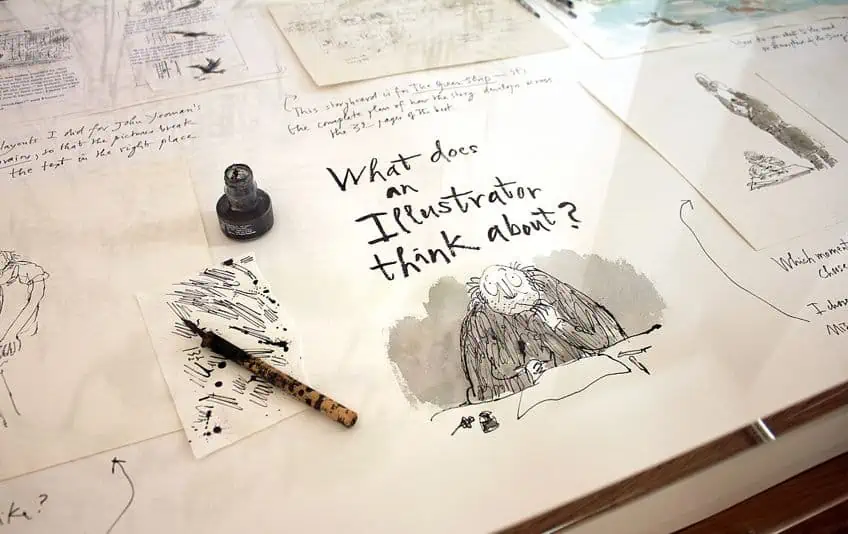
Quentin Blake’s career in illustration extends beyond his passion for children’s literature since he also spent some time in exhibition curation since the 1990s, working with esteemed institutions such as the British Library and the National Gallery. In the recent decade, Blake has placed many of his large-scale illustrations in healthcare spaces across the United Kingdom and France and has received many awards, including the Whitbread Award, the Hans Christian Andersen Award, the honor of the first Children’s Laureate, and the honor of knighthood in 2013.
Jerry Pinkney (1939 – 2021)
| Artist Name | Jerry Pinkney |
| Date of Birth | 22 December 1939 |
| Date of Death | 20 October 2021 |
| Nationality | American |
| Associated Movements, Themes, and Styles | Modern art, children’s book illustrations, non-fiction, and watercolor painting |
| Mediums | Illustration, writing, and painting |
| Notable Works |
|
Born in 1939 in Philadelphia, Pennsylvania, Jerry Pinkney was among the most renowned illustrators and authors of all time. His 50-year career in illustration reflects his deep passion for community, family, and life, which invited a sincere engagement with the art form. His complex history with illustration was also backed by his career as a painter since he was also famous for being a master watercolorist. Through his illustrations, Pinkney communicated personal messages using elegant illustrations that celebrated the ordinary moments of life, from classical literature to the wise words of those who inspired him. The illustrator’s work has adorned the covers and pages of many print media, from postcards to historic sites and product advertisements.
Pinkney studied at the Dobbins Vocational High School, where he took up the commercial art program and displayed early proficiency in graphic design, calligraphy, and drafting. He then attended the Philadelphia School of Art and became the first person in his family to obtain a higher education.
By 1964, he was already working at Barker-Black Studio, where he created The Adventures of Spider: West African Folk Tales by Joyce Cooper Arkhurst, which was the seminal breaking point of his prolific career, followed by over 100 picture book illustrations. Pinkney was also the co-founder of an independent studio called Kaleidoscope and began freelancing as an illustrator in 1965.
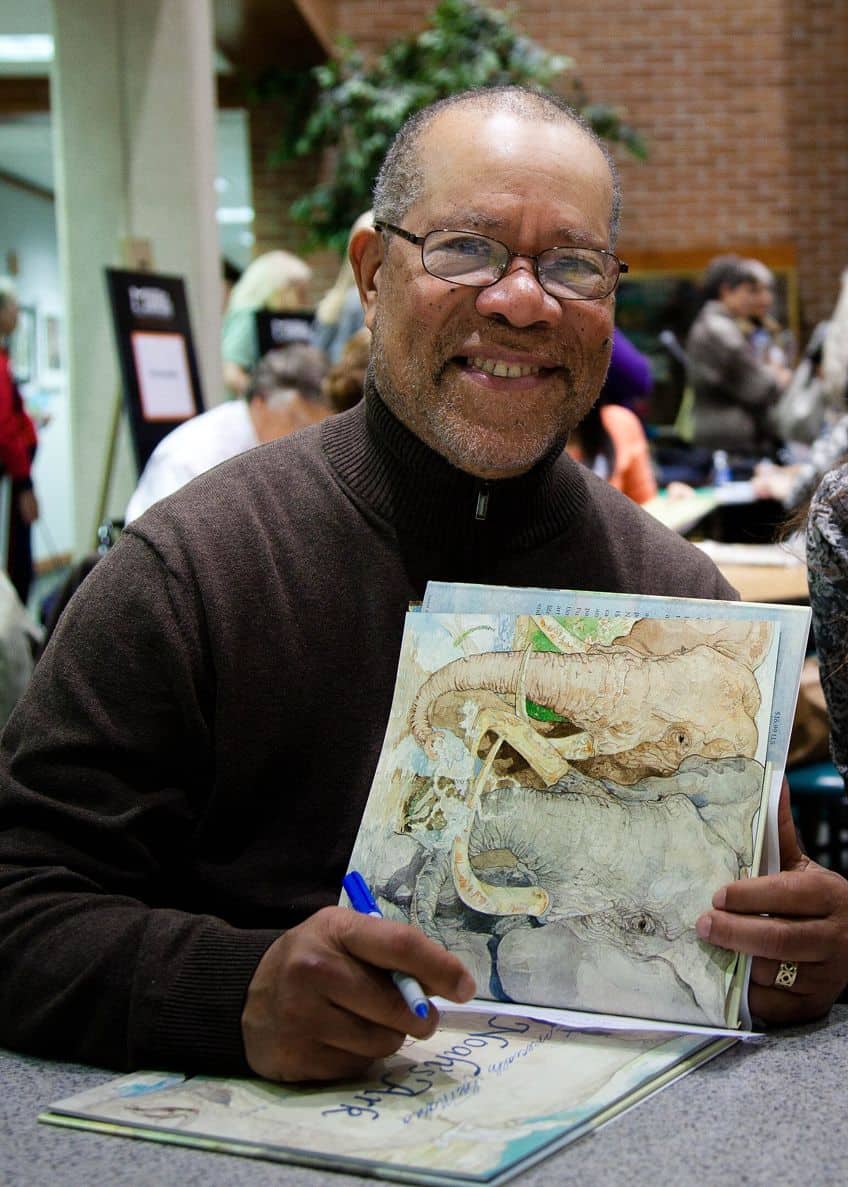
While Pinkney’s works strayed from the walls of museums and galleries, his art resonated widely with the public and those who sought deeper meaning in the stories he told. His professional career kickstarted in the 1960s and was rooted in his engagement with history and the power of storytelling to create extraordinary narratives from daily life. His characters were meticulously detailed and well-researched, which inspired many young illustrators in the contemporary era.
Richard Corben (1940 – 2020)
| Artist Name | Richard Vance Corben |
| Date of Birth | 1 October 1940 |
| Date of Death | 2 December 2020 |
| Nationality | American |
| Associated Movements, Themes, and Styles | Modern art, Contemporary art, comic book art, Heavy Metal magazine illustrations, |
| Mediums | Illustration, writing, and drawing |
| Notable Works |
|
Born in 1940, Richard Vance Corben is one of the most famous graphic illustrators and painters of the 20th century. Corben’s lifelong dedication to illustration began in his childhood through early artistic explorations of producing comics with imitations of many well-known fictional characters such as Tarzan and the Brothers of the Spear. He also took an interest in animation, which led to him creating many animated flipbooks. Corben’s rise to success was best documented in the 1970s and 1980s, as his status grew through various contributions to publications such as Heavy Metal magazine, where he developed his signature style working in a pseudo-grotesque aesthetic producing visceral painted illustrations.
Among his most notable collaborative projects include work on the graphic novella Vic and Blood by Harlan Ellison and later A Boy and His Dog. Today, Corben is widely recognized as a pioneer of graphic novel illustration with works from the artist’s portfolio like Blood Star being identified as the first graphic novel. Corben also created illustrations for the album cover of Meatloaf’s Bat Out of Hell album, which earned him recognition in the music industry. In the comic industry, Corben’s career extends to artworks he produced for Dark Horse Comics in the Aliens series, as well as Aliens vs. Predator: War.
Hayao Miyazaki (1941 – Present)
| Artist Name | Hayao Miyazaki |
| Date of Birth | 5 January 1941 |
| Nationality | Japanese |
| Associated Movements, Themes, and Styles | Modern and Contemporary art, Japanese animation, storytelling, fiction, and manga art |
| Mediums | Illustration, animation, drawing, and painting |
| Notable Works |
|
Born in 1941, Japanese manga illustrator and globally renowned animator and director Hayao Miyazaki is one of the most famous illustrators of all time. Miyazaki is recognized as a giant in Japanese cinema and is best known as the co-founder of Studio Ghibli. Among some of his best masterpieces include Princess Mononoke (1997) and Spirited Away (2001), which showcases the artist’s delicate and painterly illustration style that echoes strongly in his animations. His distinct simplified style also provides a hand-drawn and more human approach to animation that is increasingly dominated by computer technology today.

Miyazaki’s journey in illustration, animation, and storytelling began in 1963 with Toei Animation, where he produced intermediary frames. He later founded Studio Ghibli in 1985 with three other contemporaries, which marked the birth of an animation powerhouse that garnered international acclaim. For the next five decades, his work reached many adults and children worldwide, which was cemented in Time magazine, which named him one of the most influential people. Miyazaki’s reflection on his field was captured in a statement that said “Civilization moves on. I have been very fortunate to do the same job for 40 years. That’s rare in any era”.
Malika Favre (1982 – Present)
| Artist Name | Malika Favre |
| Date of Birth | 1 December 1982 |
| Nationality | French |
| Associated Movements, Themes, and Styles | Contemporary art, Op art, Pop art, graphic art, and Minimalism |
| Mediums | Illustration, installation, painting, and digital art |
| Notable Works |
|
French illustrator Malika Favre is one of the most popular graphic illustrators of our time, who is currently based in Barcelona. Favre’s illustration art is widely celebrated for her minimal style and bold use of color that is reminiscent of the Pop art movement, with elements of Op art in her line work. A master of graphic arts, Favre has also been praised for her use of positive and negative space in her illustrations that bring her formal elements to life and infuse her works with the graphic impact it requires for various campaigns.
She is recognized as one of Europe’s most sought-after illustrators with her client list including Sephora, The New Yorker, and Vogue.
Malika Favre attended the École Supérieure des Arts Graphiques in Paris and moved to London to pursue her passion for illustration. Since then, she has created many stunning covers for various publications that show off her signature style, incorporating graphic patterns with geometric shapes and delicate renderings of the human form. The artist has also collaborated with companies like Apple and produced installations and murals to extend her practice.
These famous modern and contemporary illustrators have all contributed significantly to the preservation of the art form across digital and print media, which has reached millions of people across the globe. Other emerging and established artists and creatives working in illustration include figures like Panteha Abareshi, Christoph Niemann, Jillian Tamaki, Ralph Steadman, Rupi Kaur, and Hiromu Arakawa.
We hope that the stories and personalities of these 10 famous illustrators will inspire you to explore the world of illustration as a way to not only embrace storytelling, but also examine how your images and creations can affect the world. In finding deeper meaning in your art practice, you may be more motivated to experiment and create, especially when you face moments that are hard to capture in words alone.
Frequently Asked Questions
Who Was the Most Famous Illustrator of the 20th Century?
Norman Rockwell, a renowned American illustrator, was recognized as the most famous illustrator of the 20th century. While he is a prolific figure, there were also numerous illustrators working across different genres of illustration who were also considered to be incredibly famous.
Who Was the Most Famous Scientific Illustrator?
Leonardo da Vinci, the famous Italian polymath and artist, was identified as the most famous scientific illustrator of all time. Da Vinci is commonly associated with some of the best masterpieces in art history and produced many scientific illustrations in ink, graphite, and chalk.
Who Is the Most Famous Children’s Book Illustrator?
Maurice Sendak, who authored Where the Wild Things Are (1963), was also recognized as the most famous illustrator of children’s literature. Throughout his career, Sendak created illustrations for more than 150 publications.
Who Are the Three Most Famous Commercial Illustrators?
Among the top three most famous commercial illustrators are Beatrix Potter, Quentin Blake, and Richard Corben, whose works are also known globally. While these are the most famous commercial illustrators, there are many more artists and cartoonists whose works have also gained significant popularity.
Jordan Anthony is a Cape Town-based film photographer, curator, and arts writer. She holds a Bachelor of Art in Fine Arts from the University of the Witwatersrand, Johannesburg, where she explored themes like healing, identity, dreams, and intuitive creation in her Contemporary art practice. Jordan has collaborated with various local art institutions, including the KZNSA Gallery in Durban, the Turbine Art Fair, and the Wits Art Museum. Her photography focuses on abstract color manipulations, portraiture, candid shots, and urban landscapes. She’s intrigued by philosophy, memory, and esotericism, drawing inspiration from Surrealism, Fluxus, and ancient civilizations, as well as childhood influences and found objects. Jordan is working for artfilemagazine since 2022 and writes blog posts about art history and photography.
Learn more about Jordan Anthony and about us.
Cite this Article
Jordan, Anthony, “Famous Illustrators – Profiles of 10 Renowned Illustrators.” artfilemagazine – Your Online Art Source. December 13, 2023. URL: https://artfilemagazine.com/famous-illustrators/
Anthony, J. (2023, 13 December). Famous Illustrators – Profiles of 10 Renowned Illustrators. artfilemagazine – Your Online Art Source. https://artfilemagazine.com/famous-illustrators/
Anthony, Jordan. “Famous Illustrators – Profiles of 10 Renowned Illustrators.” artfilemagazine – Your Online Art Source, December 13, 2023. https://artfilemagazine.com/famous-illustrators/.


